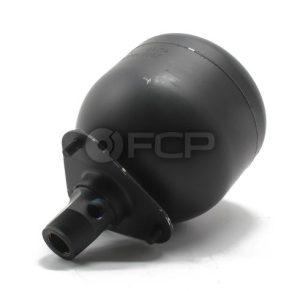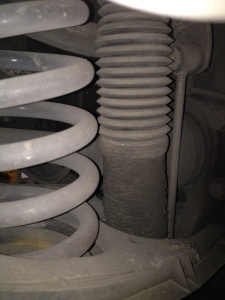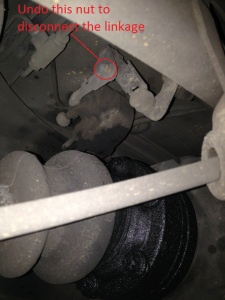- 06/07/2015
- 1 Min Read
- By: Greg Duffield
How To Fix Mercedes-Benz Wagon Poor Ride Quality (W210, W124, W123)
If you have an older Mercedes station wagon (pre-2004) you have probably dealt with poor ride quality at some point. I like to compare it to driving around a basketball. This is similar to driving a car with cut coil springs or having no give to the suspension. These station wagons are equipped with self-leveling suspension (SLS) that works brilliantly when everything is on order. This system maintains normal ride height in the rear axle if you have junk in the trunk. This write-up describes the process on the W210 E-Class. There may be minor variations for other models.
The major components in the system consist of the hydraulic pump (also acts as a power steering pump), leveling valve, hydraulic shock absorbers, and the accumulators. The pump and the leveling valve are generally considered to be pretty reliable. The trouble usually lies with the accumulators. These are essentially just a steel sphere with a rubber diaphragm inside that absorbs irregularities in the road when the shocks force hydraulic fluid into them. When these diaphragms fail, the rear suspension loses its dampening ability. The hydraulic shocks tend to leak around the same time the spheres fail. The shocks and lower control arms will be damp with hydraulic fluid when this happens.

Replacement
Replacing the accumulators is a pretty straight forward process. The hardest part is the bleeding procedure. It is a good idea to replace these in pairs. Jack up the car and put the rear axle on jack stands. Remove the rear wheels and place a drain pan underneath the accumulator. Slowly crack the lines to bleed off any hydraulic pressure. Simply loosen the fittings and mounting points the sphere will come out easily. Install the new accumulator in reverse order and repeat for the other side.
Mercedes Suspension Self-Leveling Unit Accumulator - Febi 1403280515
 Notice the darker area of the shock. The leakage has just begun.
Notice the darker area of the shock. The leakage has just begun.
Replacing the hydraulic shocks is actually easier to do than replacing a standard gas shock. This is because you will not have to fight against expanding pressure when mounting them. With the car jacked up disconnect the upper shock mount. These are accessible by removing the trunk panels on both sides. The next step is to crack the line going to each shock. Pull the shock downwards to force the fluid out. The shock will remain compressed and can then be easily removed by loosening the lower bolts. Installation is reversed. This would be a great time to replace the SLS fluid filter, which leads me to the next step.
There are a few ways to bleed the air out of the system. I have tried putting the car on the ground and adding weight (friends) to the cargo area to get the system bled with the engine running. Another way is to just drive the car for an extended period. Neither of these has proved effective enough for my liking so I came up with a new method.

Disclaimer: Do the following ONLY with the rear axle off the ground! This is a major safety hazard! Add fluid to compensate for the fluid you lost and start the engine. Disconnect the linkage to the level control valve which exists near the rear differential. Then move the linkage to simulate a full load in the trunk to pump fluid through the system. Reassemble the car and drive it. Recheck the hydraulic fluid and you’re done!










